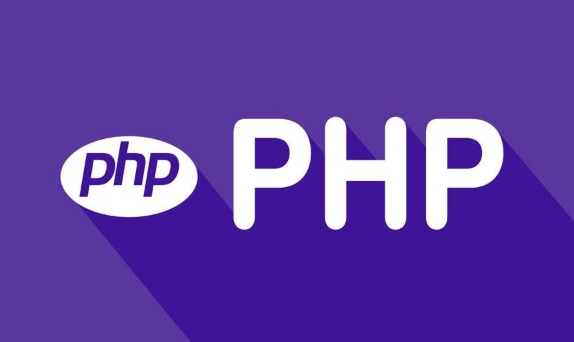To safely handle file system operations in PHP, first of all, you need to verify and clean all user input, use basename() to extract file names, avoid directly allowing users to input paths, and check whether the input meets expectations through regular expressions; secondly, restrict files to access a secure directory, you can compare the allowable paths by using realpath() in the open_basedir configuration or code; thirdly, set correct file and directory permissions, recommend 0755 directory and 0644 file permissions, avoid using 0777; fourthly, use PHP built-in functions to process files to avoid executing shell commands; finally record and monitor file operation behaviors to discover abnormal activities. These steps can effectively prevent unauthorized access, data loss or the risk of server trapping.

Handling file system operations in PHP securely isn't just about making sure your code works — it's about making sure no one can misuse it. Whether you're reading, writing, or deleting files, a small oversight can lead to serious security issues like unauthorized access, data loss, or even full server compensation.

Here are some practical ways to keep things safe when working with the file system in PHP.
Validate and Sanitize All User Inputs
Never trust what comes from the user. If your script accepts filenames, paths, or any kind of input that affects file operations, make sure to validate and sanitize it thoroughly.

- Use
basename()to extract only the filename from a path. - Avoid allowing user input directly in file paths — build them yourself.
- Check if the input matches expected patterns using regex.
For example:
$filename = basename($_GET['file']);
if (!preg_match('/^[a-zA-Z0-9_-] \.txt$/', $filename)) {
die('Invalid filename');
} This helps prevent directory traversal attacks (like someone trying to access ../../etc/passwd ).

Restrict File Access to Safe Directories
Even if inputs are clean, you still want to limit where your scripts can read from or write to. This is especially important in shared hosting environments or applications with upload features.
You can use PHP's open_basedir directive in php.ini or .htaccess to restrict the directories PHP can access:
php_value open_basedir "/var/www/html/safe_dir:/tmp"
Or within code, use realpath() and check against allowed paths:
$allowed_dir = '/var/www/html/uploads/';
$file_path = realpath($_POST['user_file']);
if (strpos($file_path, $allowed_dir) !== 0) {
die('Access denied');
}This makes sure users can't access files outside of permitted areas.
Set Proper File and Directory Permissions
By default, PHP runs as the web server user (often www-data , apache , or _www ), which means any files created by PHP will be owned by that user.
When creating directories or files:
- Set permissions explicitly using
chmod(). - Avoid world-writable permissions (
0777) unless absolutely necessary. - Prefer
0755for directories and0644for files.
Example:
mkdir('new_folder', 0755, true); file_put_contents('log.txt', 'data', LOCK_EX); chmod('log.txt', 0644);
Also, make sure the web server doesn't have unnecessary access to sensitive parts of the filesystem.
Use Built-in Functions and Avoid Shell Commands
PHP has plenty of built-in functions for file handling — like fopen() , file_get_contents() , rename() , and unlink() . These are generally safer than running shell commands with exec() or system() .
Avoid doing something like this:
exec("rm -rf " . escapeshellarg($user_input)); // risky! Even with escapeshellarg() , it's easy to get things wrong. Stick to native PHP functions whenever possible.
If you must use shell commands:
- Always use
escapeshellarg()orescapeshellcmd(). - Be extra cautious with dynamic input.
Log and Monitor File Operations
Keep track of what files are being accessed or modified. This can help detect suspicious behavior or bugs before they become big problems.
For example, log file access attempts:
error_log("User accessed file: " . $filename);In production, combine this with monitoring tools or intrusion detection systems to alert on absolute activity.
Security in file handling comes down to control — controlling what gets accessed, how it's accessed, and who can trigger those actions. Follow these practices, and you'll avoid most common pitfalls.
That's basically it.
The above is the detailed content of How do you handle file system operations in php securely?. For more information, please follow other related articles on the PHP Chinese website!

Hot AI Tools

Undress AI Tool
Undress images for free

Undresser.AI Undress
AI-powered app for creating realistic nude photos

AI Clothes Remover
Online AI tool for removing clothes from photos.

Clothoff.io
AI clothes remover

Video Face Swap
Swap faces in any video effortlessly with our completely free AI face swap tool!

Hot Article

Hot Tools

Notepad++7.3.1
Easy-to-use and free code editor

SublimeText3 Chinese version
Chinese version, very easy to use

Zend Studio 13.0.1
Powerful PHP integrated development environment

Dreamweaver CS6
Visual web development tools

SublimeText3 Mac version
God-level code editing software (SublimeText3)

Hot Topics
 php regex for password strength
Jul 03, 2025 am 10:33 AM
php regex for password strength
Jul 03, 2025 am 10:33 AM
To determine the strength of the password, it is necessary to combine regular and logical processing. The basic requirements include: 1. The length is no less than 8 digits; 2. At least containing lowercase letters, uppercase letters, and numbers; 3. Special character restrictions can be added; in terms of advanced aspects, continuous duplication of characters and incremental/decreasing sequences need to be avoided, which requires PHP function detection; at the same time, blacklists should be introduced to filter common weak passwords such as password and 123456; finally it is recommended to combine the zxcvbn library to improve the evaluation accuracy.
 PHP Variable Scope Explained
Jul 17, 2025 am 04:16 AM
PHP Variable Scope Explained
Jul 17, 2025 am 04:16 AM
Common problems and solutions for PHP variable scope include: 1. The global variable cannot be accessed within the function, and it needs to be passed in using the global keyword or parameter; 2. The static variable is declared with static, and it is only initialized once and the value is maintained between multiple calls; 3. Hyperglobal variables such as $_GET and $_POST can be used directly in any scope, but you need to pay attention to safe filtering; 4. Anonymous functions need to introduce parent scope variables through the use keyword, and when modifying external variables, you need to pass a reference. Mastering these rules can help avoid errors and improve code stability.
 How to handle File Uploads securely in PHP?
Jul 08, 2025 am 02:37 AM
How to handle File Uploads securely in PHP?
Jul 08, 2025 am 02:37 AM
To safely handle PHP file uploads, you need to verify the source and type, control the file name and path, set server restrictions, and process media files twice. 1. Verify the upload source to prevent CSRF through token and detect the real MIME type through finfo_file using whitelist control; 2. Rename the file to a random string and determine the extension to store it in a non-Web directory according to the detection type; 3. PHP configuration limits the upload size and temporary directory Nginx/Apache prohibits access to the upload directory; 4. The GD library resaves the pictures to clear potential malicious data.
 Commenting Out Code in PHP
Jul 18, 2025 am 04:57 AM
Commenting Out Code in PHP
Jul 18, 2025 am 04:57 AM
There are three common methods for PHP comment code: 1. Use // or # to block one line of code, and it is recommended to use //; 2. Use /.../ to wrap code blocks with multiple lines, which cannot be nested but can be crossed; 3. Combination skills comments such as using /if(){}/ to control logic blocks, or to improve efficiency with editor shortcut keys, you should pay attention to closing symbols and avoid nesting when using them.
 How Do Generators Work in PHP?
Jul 11, 2025 am 03:12 AM
How Do Generators Work in PHP?
Jul 11, 2025 am 03:12 AM
AgeneratorinPHPisamemory-efficientwaytoiterateoverlargedatasetsbyyieldingvaluesoneatatimeinsteadofreturningthemallatonce.1.Generatorsusetheyieldkeywordtoproducevaluesondemand,reducingmemoryusage.2.Theyareusefulforhandlingbigloops,readinglargefiles,or
 Tips for Writing PHP Comments
Jul 18, 2025 am 04:51 AM
Tips for Writing PHP Comments
Jul 18, 2025 am 04:51 AM
The key to writing PHP comments is to clarify the purpose and specifications. Comments should explain "why" rather than "what was done", avoiding redundancy or too simplicity. 1. Use a unified format, such as docblock (/*/) for class and method descriptions to improve readability and tool compatibility; 2. Emphasize the reasons behind the logic, such as why JS jumps need to be output manually; 3. Add an overview description before complex code, describe the process in steps, and help understand the overall idea; 4. Use TODO and FIXME rationally to mark to-do items and problems to facilitate subsequent tracking and collaboration. Good annotations can reduce communication costs and improve code maintenance efficiency.
 Quick PHP Installation Tutorial
Jul 18, 2025 am 04:52 AM
Quick PHP Installation Tutorial
Jul 18, 2025 am 04:52 AM
ToinstallPHPquickly,useXAMPPonWindowsorHomebrewonmacOS.1.OnWindows,downloadandinstallXAMPP,selectcomponents,startApache,andplacefilesinhtdocs.2.Alternatively,manuallyinstallPHPfromphp.netandsetupaserverlikeApache.3.OnmacOS,installHomebrew,thenrun'bre
 Learning PHP: A Beginner's Guide
Jul 18, 2025 am 04:54 AM
Learning PHP: A Beginner's Guide
Jul 18, 2025 am 04:54 AM
TolearnPHPeffectively,startbysettingupalocalserverenvironmentusingtoolslikeXAMPPandacodeeditorlikeVSCode.1)InstallXAMPPforApache,MySQL,andPHP.2)Useacodeeditorforsyntaxsupport.3)TestyoursetupwithasimplePHPfile.Next,learnPHPbasicsincludingvariables,ech






